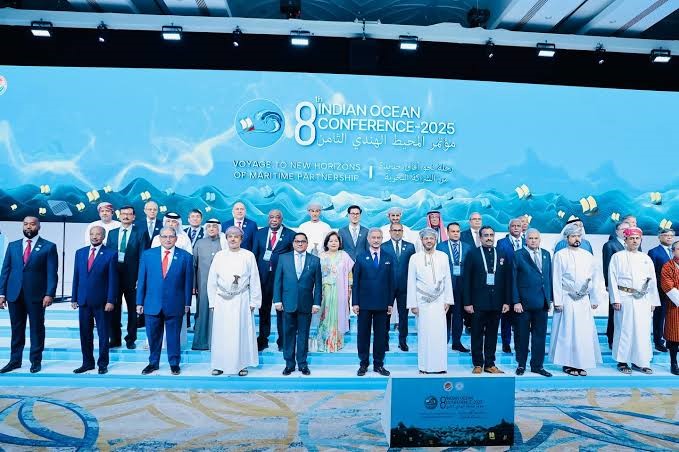MOON’S HIDDEN WATER: A GAME CHANGER
Syllabus:
GS-3:
- Advancement in the field of Science and technology
- Space technology.
Why in the News?
- A new study based on Chandrayaan-3’s Vikram lander data suggests that water ice may be more accessible on the Moon than previously believed.
- The study, conducted by researchers from the Physical Research Laboratory (PRL), Ahmedabad, provides insights into temperature variations on the Moon’s surface and subsurface.
- The findings, published in the journal Communications Earth & Environment (March 6, 2024), could aid future lunar exploration and habitation plans.
Key Findings from Vikram Lander’s Data
1. Temperature Variations on the Moon
- Using the Chandra’s Surface Thermophysical Experiment (ChaSTE), the study recorded extreme temperature differences at the Moon’s south pole region (Shiv Shakti point).
- Peak daytime temperature at the site was 82°C, while nighttime temperatures dropped to -181°C.
- Significant variations were observed even over a metre’s distance—one spot recorded 82°C, while another, just a metre away, was 58°C.
- This suggests that temperature fluctuations at small scales may create environments where water ice can stabilize.
2. Role of RTD Sensors in Temperature Analysis
- ChaSTE is equipped with 10 platinum resistance temperature detector (RTD) sensors, which measured temperature variations up to 10 cm depth.
- The instrument directly measured lunar soil temperatures for 10 Earth days (August 24 – September 2, 2023).
- Scientists used a 3D thermophysical model to analyze day-night temperature variations, crucial for understanding water ice stability.
3. Potential for Water Ice Stability
- Scientists previously believed water ice remained stable only at the Moon’s poles.
- The study found that certain high-latitude locations with slopes facing away from the Sun could maintain lower temperatures, making water ice migration and accumulation possible.
- Slopes with a tilt of more than 14° were found to maintain temperatures suitable for water ice stability.
- This expands the potential areas where future lunar missions could extract water for human use and rocket fuel.
4. Importance for Future Moon Missions
- The US, China, Russia, and India are working on long-term lunar stations, making on-site water availability crucial.
- The findings suggest water ice could be found in more areas than just the poles, easing resource constraints for future lunar habitats.
- The discovery also reduces technical challenges, as exploring high-latitude regions is easier than reaching polar extremes.
5. Advancing Lunar Science and Exploration
- This is the first-ever in-situ temperature measurement at a high-latitude lunar region, providing accurate surface and subsurface temperature data.
- The study’s model can help predict water ice locations across different lunar terrains.
- Scientists are now analyzing how lunar soil properties affect heat absorption and retention, improving understanding of lunar thermophysical properties.
Significance of the Study
1. Expanding Lunar Water Accessibility
- The study challenges previous assumptions that water ice is stable only at the Moon’s poles.
- It identifies new areas where ice may exist in accessible quantities, increasing the feasibility of human settlements on the Moon.
2. Supporting Sustainable Space Exploration
- Moon water could be used for astronaut survival and fuel production, reducing reliance on Earth’s resources.
- Rocket fuel production using lunar water could make deep-space exploration more cost-effective.
3. Strengthening India’s Lunar Research Capabilities
- This study highlights ISRO’s growing capabilities in lunar exploration.
- The data will help India contribute to global space exploration efforts, such as NASA’s Artemis program and future international moon bases.
4. Improving Scientific Understanding of the Moon
- The findings enhance our knowledge of lunar geology and climate.
- Understanding temperature variations is critical for designing lunar habitats, rovers, and exploration equipment.
5. Boosting India’s Role in Space Diplomacy
- India’s successful lunar exploration strengthens its position in global space collaborations.
- The findings may lead to joint missions with countries like the US, Japan, and the European Union.
Implications for Future Lunar Missions
- Enhanced Site Selection – The discovery of water ice beyond the poles expands potential landing and habitation zones.
- Resource Utilization – Extracting water from multiple locations supports long-term lunar exploration.
- Reduced Dependence on Earth – Moon-based water can be used for astronaut consumption and fuel production.
- Sustainable Lunar Economy – Availability of water ice paves the way for space mining and resource management.
- Boost to Global Space Missions – Findings aid international collaborations for future lunar bases.
India’s Growing Role in Lunar Exploration
- Scientific Leadership – Chandrayaan-3 strengthens India’s position in global space research.
- Technological Advancements – ISRO’s in-situ experiments enhance expertise in planetary exploration.
- International Partnerships – Data from Chandrayaan-3 benefits collaborative space missions.
- Future Lunar Programs – The findings provide a foundation for India’s next lunar missions.
- Economic and Strategic Gains – Success in lunar research boosts India’s space economy and global standing.
Conclusion
The Chandrayaan-3 findings redefine lunar water accessibility, indicating that water ice may exist beyond the Moon’s poles. This enhances the feasibility of sustainable lunar habitation and deep-space missions. By advancing India’s space research, the study strengthens global lunar exploration efforts and promotes space resource utilization for future missions.




